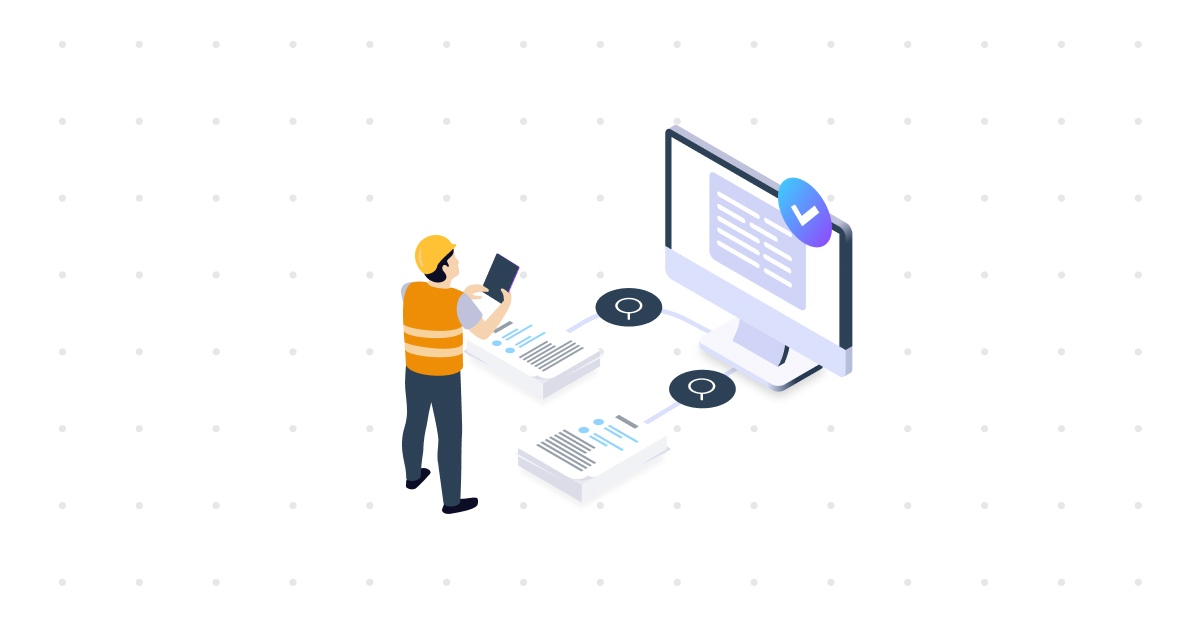Time saved by using a Reference Data Library
- Case study
As a grid operator, our client is responsible for a high-voltage network. In the role of the purchaser, you have to deal with various chain partners. We exchange data with all these partners for the construction, expansion, and maintenance of the high-voltage grid. Read how making integral agreements regarding data exchange by using a Reference Data Library, can lead to significant time savings.
Making information usable for humans and computers
To exchange information, it is essential to agree on what something means, its function, and what it consists of. Simple example: what is an electrical cable (a textual definition), what properties does it have (thickness, length, type of material, et cetera), and in what units do we enter it (meters, centimeters, copper, silver, etc.)? If you determine this in an unambiguous way, then all parties in the value chain know what information you need to exchange in what way. This allows humans and computers to apply this information directly to their environments.
As you can imagine, using these unambiguous conventions is a good idea – especially with large amounts of complex data.

Laces Reference Data Library
Our client is increasingly working with central data, capturing it in a Reference Data Library (RDL). They share and use this centrally captured information across all projects. The major advantage: the meaning and structure of information are known to everyone. This applies to internal employees and the external companies and specialists involved in these projects.
The result: a lot of time saved searching for and exchanging data. The uniformity and high quality of the data greatly reduce the likelihood of errors when using the information.
“Engineers only spend 30% of their time applying knowledge; the rest is spent searching for information. This is something we want to change”. Gertjan van Drunen, Consultant Energy at Arcadis
Our client is working with consultants from Arcadis and Semmtech, among others, to set up and use a Reference Data Library.
So what makes Laces Reference Data Library so suitable for this?
It is possible to record information unambiguously. Assets, for example, and make it suitable for exchange in various tools. Laces, however, is unique in its accessibility regarding use. Domain experts entering data can immediately exchange it between applications without the need for intervention from data and IT specialists. Laces is also unique in its use of open standards. This makes applying data in any application much easier.
More detail …
Laces allows to structure and exchange information according to Linked Data standards. Linked Data provides methods and techniques but still leaves the application in different sectors free. NTA 8035 / NEN2660 (Part II) describes the application of Linked Data in the built environment using basic concepts such as physical objects, activity, and events.
Using these standards, Laces allows our client to capture and exchange agreements about meaning in a standardized way. This is done in a Reference Data Library and based on existing electrical engineerings standards, such as IEC/ISO 81346 and IEC 61355-1*.
Our client’s asset requirements are defined in an SPL (Specification Library). With this, Laces makes managing and sharing according to standards for Linked Data easily.
By standardizing and sharing meaning and requirements, there is a solid basis for information exchange between our client and chain partners.
*Explanation of the two electronic standards mentioned:
- IEC/ISO 81346 (Industrial systems, installations and equipment, and industrial products – structuring principles and reference designations). This standard was used as the basis for the physical object’s structure.
- IEC 61355-1 (Classification and designation of documents for plants, systems, and equipment). This standard was used as the basis for the document types.
Want to know more? Schedule a 45-minute demo.
Structure, Link, and Reclaim Control Over Requirements
In today’s complex engineering landscape, clarity is non-negotiable whether you’re working on a new satellite platform, an electric vehicle, or a regional water system. The systems we build are more complex, integrated, and dependent on data than ever before. And yet, one of the most critical ingredients for success, the specification, is still too often […]
ReadWhy You Should Use Laces to Simplify Verification and Compliance
Verification plays a critical role in industries where precision, safety, and accountability are non-negotiable, whether you’re designing infrastructure, building vehicles, or manufacturing medical devices. Yet, for many teams, managing the verification process is still a complex, manual, and error-prone task. This is where the Laces Requirements Manager comes in. It simplifies the planning and execution […]
ReadExtracting Specifications from Documents: Manual vs. NLP-Based Extraction
Extracting, interpreting, and applying specifications from technical documents, like standards, contracts, or regulations, is often a necessary but painstaking part of project or product management. Traditionally, this has been done manually, but recent advances in Natural Language Processing (NLP) have opened up new, intelligent alternatives. In this blog, we’ll explore the differences between manual and […]
Read


